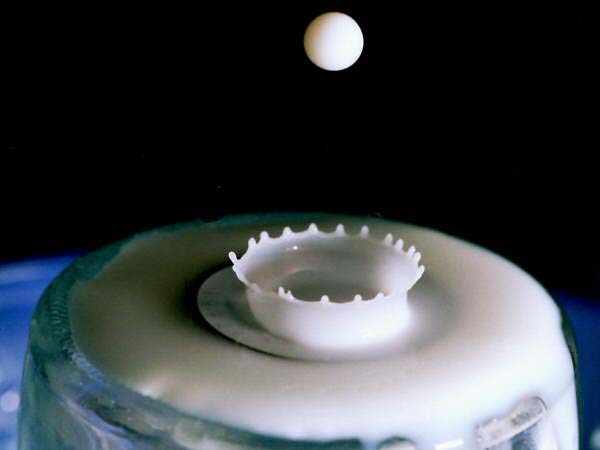Professor
Nonlinear Dynamical Systems Group
Department of Mathematics
San Diego State University
San Diego, CA 92182-7720

| HOME | VITAE HTML |
VITAE |
PUBLICATION LIST |
RESEARCH OVERVIEW |
RESEARCH STATEMENT |
PATENTS | TEACHING COURSES |
TEACHING STATEMENT |
NONLINEAR DYN SITES |
CONTACT ME |
Research Projects |
|
Over the past eighteen years
I have developed an interdisciplinary undergraduate and graduate
research program in Applied and Computational Mathematics. The
work has an emphasis on combining dynamical systems theory, group
theoretical methods, i.e., equivariant bifurcation theory, and
computational methods to model, analyze, and predict the behavior
of Complex Nonlinear Systems.
|
|
| Biologically-inspired
Sensor Devices A major theme of my research is to explore the advantages exhibited by biological network systems to model, design, and fabricate, sensory devices that can harness cooperative behavior to increase sensitivity at low power. For instance, sharks can sense extremely weak electric fields due to the collective output of thousands of detectors called ampullae of Lorenzini. A general question is to investigate what aspects of the network dynamics are due to network topology and what aspects are due to details of the internal dynamics of each cell. In collaboration with scientists and engineers from the Space and Naval Warfare Center, San Diego, we have modeled, analyzed and fabricated a new generation of highly-sensitive (up to 400 times more sensitive than conventional sensors) networks of magnetic and electric field sensors. The network exploits the bistability of each unit and the topology of heteroclinic cycles induced by cyclic symmetry. The work has been supported by NSF, ONR, DoD, and has lead to internships for participating students, manuscripts, and multiple U.S. patents, please see vitae. We are currently developing the concept of a Universal Ultra Sensitive Network System capable of detecting: magnetic field, electric field, seismic, acoustic, infrared, thermal neutrons, chemical and biological multi-agent sensing (CMAS), and other signals in one single unit. |
|
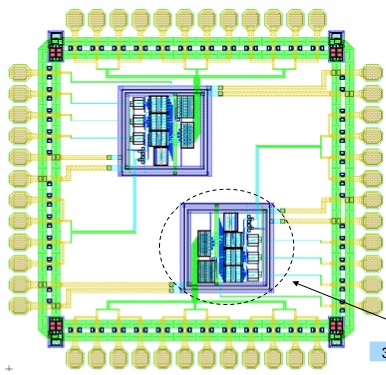 |
 |
MEMS Gyroscopes Funded by the National Science Foundation, we have shown, analytically and computationally, proof of concept that networks of coupled gyroscopes, modeled by can offer significant performance improvements by reducing the negative effects of noise while minimizing phase drift. We also developed a novel scheme, a drive-free network-based gyroscope system, in which the coupling topology can lead to self-regulated limit cycle oscillations in the drive- and sense-axes with stable constant amplitude and phase-locking. This work was selected and advertised by AIP (American Institute of Physics) as a research highlight due to its originality and novelty of the concept. The next step is to explore a possible MEMS realization of the models. In addition, the work has led to many unanswered questions regarding the nature of the bifurcations in large networks. A perturbation analysis is not well suited, so we are currently investigating a different approach via coupled Hamiltonian systems. |
|
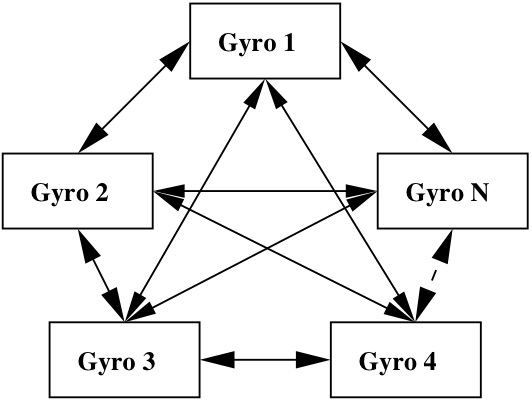 |
 |
 |
|
Energy Harvesting Energy harvesting devices are key to a wide range of technologies: wireless sensor networks, micro wind turbine, thermoelectric generators, health monitoring systems, human-generated power devices for biomedical applications and, of course, consumer products such as automatic wristwatches and TV remote controls, to the cloud. A major challenge to advance these technologies is the fact that the amount of electrical energy produced is small for these devices. To circumvent this problem, several groups have considered nonlinear materials and have proposed innovative designs and techniques, which together can improve power output. The improvements are, however, reaching the fundamental limits of power output that can be harvested with single units. Only in recent years networks of multiple harvesters have started to attract attention but a comprehensive analysis of the governing equations has not been carried out yet. This is a more recent project in which I am currently modeling and analyzing the power output response of a network of energy harvesters made up of magnetorestrictive materials. One of the goals is to determine scaling laws for the energy output as a function of the size of the network and the topology of connections. |
|
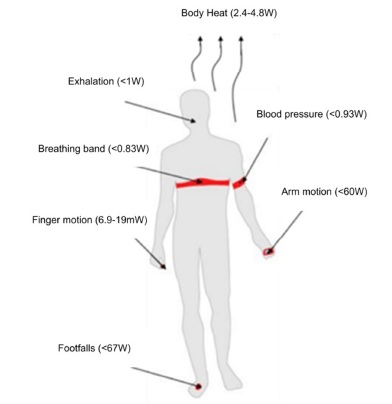 |
 |
Microwave Signal Generator The 2007 Nobel prize in Physics was awarded jointly to Albert Fert and Peter Grunberg for their discovery of the Giant Magnetoresistance Effect (GMR). The GMR effect can convert the magnetic precession of an electron into microwave voltage signals and turn the oscillator into a Spin Torque Nano-Oscillator (STNO) but its power output, about 1 nW, is too small for practical applications. A possible solution is to synchronize several STNOs so that a coherent signal with a common frequency and phase can be extracted from the ensemble to produce a more powerful microwave signal. Supported by NSF, I am currently studying and classifying the various coherent statesthat an ensemble of STNOs can produce, finding conditions for the existence and stability of such coherent states, determining the effects of different couplings and connection topologies. |
|
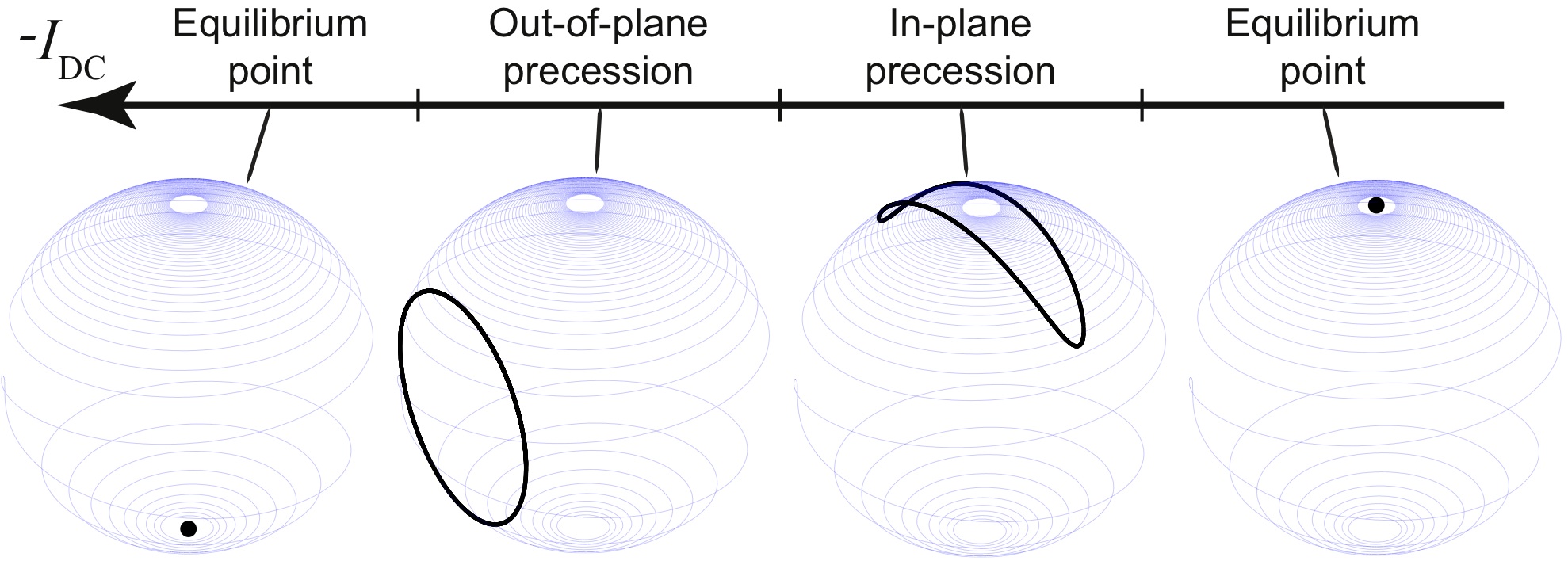 |
 |
Networks of Superconducting Loops Supported by NSA Tactical SIGINT Technology Program, we have conducted extensive analysis and computer simulations of the collective voltage response of networks of thousands of superconducting quantum loops. The aim is the development of a sensitive, low noise, significantly lower Size, Weight and Power (SWaP) antenna, capable of meeting all requirements for certain class ships for Information Operations/Signals Intelligence (IO/SIGINT) applications in Very High Frequency/Ultra High Frequency (V/UHF) bands. The device will increase the listening capability of receivers by moving technology into a new regime of energy detection allowing wider band, smaller sized, more sensitive, more stealth systems. The smaller size and greater sensitivity will allow for ships to be de-cluttered of their current large dishes and devices. Ongoing work includes derivation of asymptotic analytical approximations to the exact solutions. Such solutions could be used to expedite future analysis of other array configurations. |
|
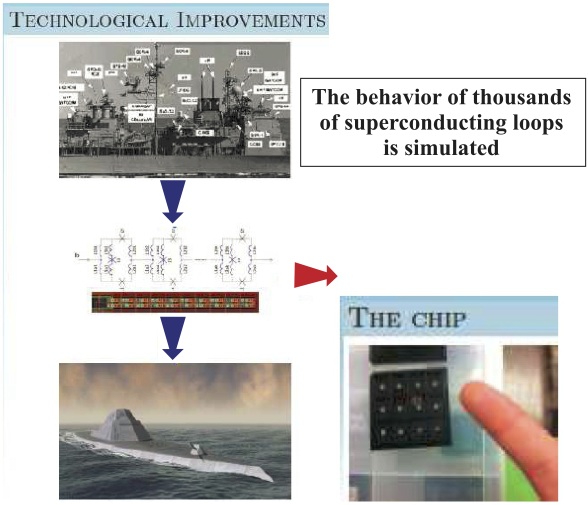 |
|
Computational Models of Ozone Formation Tropospheric ozone is deleterious to both human and ecosystem health. It is produced through non-linear chemical reactions involving precursor emissions of nitrogen oxides (NO_x) and volatile organic compounds. Comprehensive air pollution models include detailed treatment of the emissions, transport (advective, turbulent, clouds), and chemistry dictating the spatial and temporal distribution of O_3 and related precursor species. From a policy standpoint a question of interest is to determine how much an individual source contribute to the O_3 at a given location and time. While many techniques ranging from simple brute-force methods to formal sensitivity analysis have been used, the ``backward'' attribution of O_3 at a given location/time to its sources remains challenging due to the non-linearities in the system. In this project we will address the question of determining the source of O_3 emission by solving an inverse problem from a Partial Differential Equation model for ozone concentration. |
|
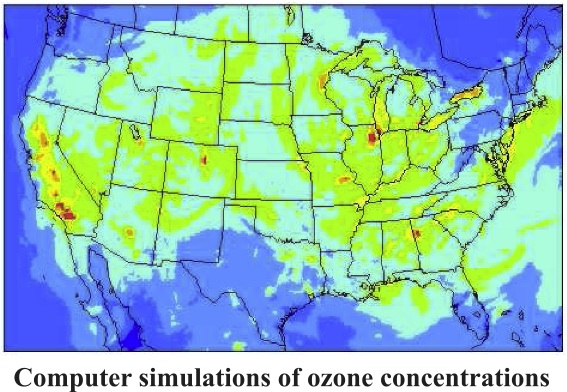 |
|
Basins of Attraction We have developed computational methods to visualize basins of attractions for coupled bistable systems. Code is available under this folder: CCFM_Manifolds. |
|
